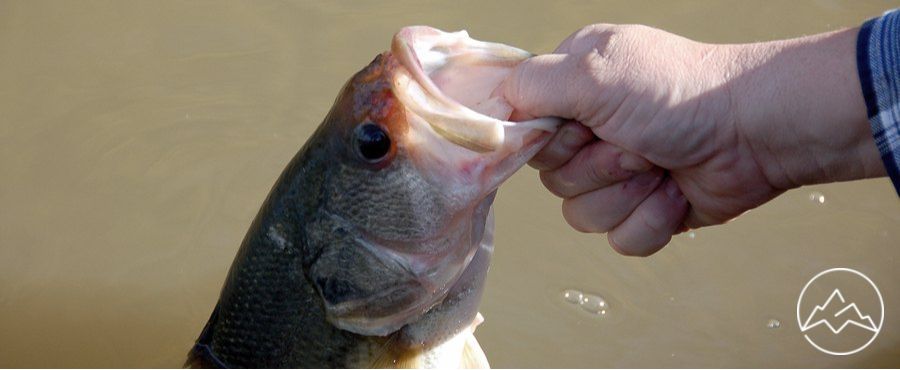If you are a beginner to bass fishing techniques, the most important components to learn are how to snag more bass and how to make larger catches. Keep scrolling for the top 5 basic bass fishing tips that all beginner anglers need to know in order to make a winning catch.
Tip #1: How to locate bass
If you want to learn how to catch bass, the first thing you need to know is where to find them. Bass resides in areas near cover affixed to a structure. The words ‘structure’ and ‘cover’ are two of the most frequently used terms anglers bandy about to describe the best areas to locate bass on lakes or other bodies of water.
It is key to understand how covers and structures differ from one another when learning where bass reside and the best way to make a successful catch.
Cover is the actual, physical object resting in a lake or other body of water. Examples of cover include piles of brush, docks, stumps, lay down trees, rocks, sand, pebbles, and vegetation.
Structures are the contours in the earth at the bottom of the body of water in which you are fishing. Examples of structures could be walls, ledges, islands, humps, drop-offs, or points in the water. Bass interacts with and reside close to different kinds of cover and structures year-round, so if you locate these areas, you’re in the money.Tip #2: Using the right bait to snag a bass
An essential element of bass fishing for beginners is knowing what bait to use to make your catch. The good news for anglers after bass is that this type of fish literally eats almost anything moving through the water. Bass regularly feast on smaller fish and fellow inhabitants, such as:
- Panfish
- Minnows
- Shad
- Frogs
- Salamanders
- Crawdads
What some anglers don’t know is that bass will also eat any creature that moves above them, such as birds, baby ducks, mice, and even snakes. (Unfortunately, this means they can eat a lot of hard and soft plastic as well.) One of the top bass fishing techniques we can impart is to make an effort to select a lure or bait that matches what you suspect the bass are actually eating.
For instance, if you’re fishing close to shore and see groups of frogs bounding about, it’s pretty likely that bass, especially the largemouth bass, are eating these a-plenty. In that case, you’d be best off with a rat or hollow-body frog as bait.
Tip #3: Selecting the ideal lures for bass fishing
The third of our bass fishing tips is how to select the ideal lures and reels for your successful catch. The short answer is that almost any lure works for catching bass! It’s key to have a versatile collection of lures though that you can interchange as needed, without relying too heavily on one type of technique over another.
For example, it is in your best interest to learn how to “power fish”, which refers to whatever bait you cast and retrieve while covering a large area of water. The best types of lures for power fishing are swim jigs, chatterbaits, spinnerbaits, crankbaits, topwater, plastic worms, and swimbaits.
You should also acquire “finesse fishing” skills, which simply means using whatever bait you desire but working it slowly, carefully, and with precision.
Jigs and worms are good baits for finesse fishing. Also, you can use a range of bass fishing techniques to leverage these types of bait, including pitching, flipping, shaky head, drop-shot, and Carolina rigs.Tip #4: Choosing the right time to go bass fishing
Another important element to understand if you want to learn how to catch bass is the right time to go bass fishing. The season, time of day, moon phase, and weather conditions at play is key in evaluating bass behavior and making a catch.
It is not uncommon for newbie anglers to fail to spend sufficient time studying bass habits and how these fish interact with their surroundings. During the summer, larger bass only eats a few times per day, typically in the wee hours of the morning and later at night.
In the wintertime, bass eating habits are turned around. They feed conservatively but typically during warmer hours of the day. Bass disperses to various portions of a particular body of water depending on what season it is.The great news for beginner anglers is that no matter what season it is (summer, fall, pre-spawn, post-spawn), it is easy to predict their migration so you can make consistent catches throughout the year. There are plenty of online resources available to help you study these bass habits but water watching to see first-hand how bass act year-round is the best education for beginner anglers.
Tip #5: Water temperature and bass activity
The final point of our bass fishing tips is related to the temperature of the body of water where bass reside and their activity. Water temperature can fluctuate widely, sometimes by more than 10 degrees depending on which part of the lake you’re on.
Depending on the time of year, these temperature variations have a direct impact on where bass reside. During the spring months, the northernmost part of a lake will warm up the quickest, setting the spawning cycle into motion and causing the bass to migrate towards the northern portion of the water.On the other hand, during the fall months, cool water will heat up faster, causing large schools of baitfish to gather for the bass to feed on before winter arrives. The temperature of the water will also affect the metabolism of bass, which impacts the way they feed.
The moral of the story here is that you must assess the temperature of the water you’ll be angling for bass in whenever you go out for a day of fishing. The water temperature is one of the most integral components to help you learn where and when bass will be in high activity that day.



